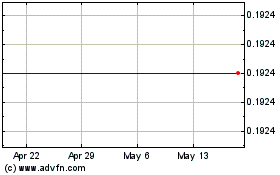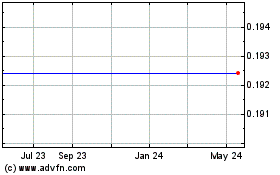- Confirms performance of Rockley’s non-invasive biomarker
sensing platform in measuring hydration levels
- Correctly predicts dehydration 99% of the time
- Introduces the Rockley Hydration Index™, a powerful new
measurement scale designed to provide a simple way to understand
personal hydration levels
Rockley Photonics Holdings Limited (NYSE: RKLY) (“Rockley”), a
global leader in photonics-based health monitoring and
communications solutions, today announced that the company has
successfully completed its preliminary human study measuring
hydration levels using Rockley’s non-invasive biomarker sensing
platform. Rockley has also created a new hydration index for
reporting relative hydration levels with the potential to simplify
the complex process of measuring personal hydration.
This press release features multimedia. View
the full release here:
https://www.businesswire.com/news/home/20220510005241/en/
Rockley Hydration Index™ (Graphic:
Business Wire)
Preliminary results of Rockley’s human study examining active
hydration levels before, during, and after exercise show that the
miniaturized photonics-based sensor in the Rockley biosensing
platform can monitor water absorption and is sensitive to water
concentration changes in different layers of the dermis. The study
shows that a Rockley wearable device was able to correctly predict
dehydration in human subjects 99% of the time and detect the normal
state of body water content (euhydration) 82% of the time. The
ability to monitor changes in body water levels on a routine basis
through a Rockley-powered device has the potential to help people
and healthcare professionals make better-informed choices about
their personal and patient hydration needs, respectively, including
the amount and timing of fluid consumption.
Until now, there has been no single “gold standard” method for
measuring hydration. Using current methodologies, properly
measuring a person’s hydration level involves a combination of
costly and time-consuming laboratory tests to assess the osmolality
and electrolyte concentrations in physiological fluids, such as
urine and blood.
To fill the need for a monitoring solution that assesses
hydration levels and doesn’t impinge on a person’s lifestyle,
Rockley has developed a photonics-based technique with the
potential to monitor hydration levels on a more routine basis and
simplify the reporting of relative hydration levels. The Rockley
Hydration Index™ will examine laboratory and field-appropriate
hydration assessment techniques and correlate their output to the
spectral data generated by the Rockley biomarker sensor. By
expressing hydration as a number, the Rockley Hydration Index has
the potential to make it easy for people to check if they are over-
or under-hydrated and deliver insights or recommendations tailored
to each person’s individual hydration needs.
“The need to maintain hydration is important for overall
wellness. However, maintaining healthy hydration habits can be
challenging, and most people are not aware of if or when their
bodies may experience a dehydration-related problem,” said Dr.
Stavros Kavouras, professor of nutrition and director of the
Hydration Science Lab at Arizona State University. “By routinely
monitoring hydration using a wearable device and simplifying how
hydration levels are reported, Rockley has provided a simple yet
powerful method for people to understand their hydration levels and
take action based on those insights.”
“The results of our hydration study are promising and show how
our wearable sensing platform can measure hydration levels,” said
Dr. Andrew Rickman, chairman and chief executive officer of
Rockley. “Our consumer healthtech and medtech customers recognize
that measuring hydration levels non-invasively on a regular basis
has far-reaching use cases and potential.”
As a solitary biomarker, assessing hydration can provide
important insights about certain health conditions. By integrating
the non-invasive, real-time monitoring of a broad range of multiple
biomarkers — including core body temperature, blood pressure, heart
rate, blood oxygen, lactate, ethanol, urea, glucose, and more — the
Rockley biosensing platform will analyze the data from all these
biomarkers holistically, leveraging Rockley’s cloud-based analytics
and AI capabilities. This combined analysis has the potential to
provide valuable new insights about an individual’s overall
health.
Rockley’s in-house hydration study represents the third in a
series of studies designed to evaluate and refine the performance
of Rockley’s biomarker sensing platform. The hydration study was
conducted at a dedicated Rockley research laboratory, overseen by
full-time research staff with extensive experience and credibility
in the fields of clinical research and study management. The study
included men and women over the age of 18 and people of varied
races and skin tones. The hydration study has been approved by the
WIRB – Copernicus Group Institutional Review Board.
Further details about Rockley’s hydration studies have been
published in a new whitepaper: The Quest for Hydration
Management, available for download on Rockley’s website.
More information about Rockley’s digital health monitoring
solution is available here:
https://rockleyphotonics.com/biomarker-sensing
About Rockley Photonics
A global leader in photonics-based health monitoring and
communications solutions, Rockley Photonics is developing a
comprehensive range of photonic integrated circuits and associated
modules, sensors, and full-stack solutions. From next-generation
sensing platforms specifically designed for mobile health
monitoring and machine vision to high-speed, high-volume solutions
for data communications, Rockley is laying the foundation for a new
generation of applications across multiple industries. Rockley
believes that photonics will eventually become as pervasive as
micro-electronics, and it has developed a platform with the power
and flexibility needed to address both mass markets and a wide
variety of vertical applications.
Formed in 2013, Rockley is uniquely positioned to support
hyper-scale manufacturing and address a multitude of high-volume
markets. Rockley has partnered with numerous tier-1 customers
across a diverse range of industries to deliver the complex optical
systems required to bring transformational products to market.
To learn more about Rockley, visit rockleyphotonics.com.
Cautionary Note Regarding Forward-Looking Statements
Statements in this press release that are not historical facts
constitute “forward-looking statements” for purposes of the safe
harbor provisions of the Private Securities Litigation Reform Act
of 1995. These forward-looking statements include statements
regarding Rockley’s future expectations, beliefs, plans,
objectives, and assumptions regarding future events or performance.
The words “accelerate,” “advance,” “anticipate,” “believe,” “can,”
“capability,” “continue,” “could,” “develop,” “enable,” “estimate,”
“eventual,” “expand, “expect,” “focus,” “forward,” “future,”
“goal,” “intend,” “may,” “might,” “opportunity,” “outlook,” “plan,”
“possible,” “position,” “potential,” “predict,” “project,”
“revolutionize,” “seem,” “should,” “trend,” “vision,” “will,”
“would” or other terms that predict or indicate future events,
trends, or expectations, and similar expressions or the negative of
such expressions may identify forward-looking statements, but the
absence of these words or terms does not mean that a statement is
not forward-looking. Forward-looking statements in this press
release include, but are not limited to, statements regarding the
following: (a) the potential of Rockley’s sensing platform to
provide real-time insights about a variety of health conditions and
enable the early detection of disease states by enabling the
detection of core body temperature from a wearable device; (b) the
importance of the ability to monitor key biomarkers like core body
temperature on a continuous basis; (c) the potential impact of the
ability to miniaturize the monitoring of key biomarkers into a tiny
form factor; (d) the ability of the PIC sensors in Rockley’s
sensing platform to detect detail beyond today’s LED-based sensor
technology, discern varying signatures of water absorption, and
determine core body temperature; (e) the potential effectiveness of
the wearable sensing platform for determining core body
temperature; (f) the timing and potential results of Rockley’s
ongoing human studies and the ability of such studies to help
optimize algorithms and refine performance across a broad range of
biomarkers; (g) the expectation that the cloud-based analytics and
AI capabilities of Rockley’s platform can help develop a more
holistic assessment of a person’s health and well-being; (h)
Rockley’s belief that its cloud and AI infrastructure can enable
additional capabilities for the fast-growing digital health domain
and help individuals make more informed decisions about their
health and well-being; (i) the anticipated and potential features,
scope, goals, and benefits of the Company’s platform, products, and
technology; (j) its development of a range of photonic integrated
circuits and associated modules, sensors, and full-stack solutions;
(k) Rockley’s belief that photonics will eventually become as
pervasive as micro-electronics; and (l) Rockley’s potential to
support hyper-scale manufacturing, address a multitude of
high-volume markets, and deliver the complex optical systems
required to bring transformational products to market.
Forward-looking statements are subject to several risks and
uncertainties (many of which are beyond Rockley’s control) or other
assumptions that may cause actual results or performance to differ
materially from those expressed or implied by these forward-looking
statements. These risks and uncertainties include, but are not
limited to, the following: (i) Rockley’s ability to achieve
customer acceptance and commercial production of its products and
technology, including in a timely and cost-effective manner; (ii)
Rockley’s ability to achieve customer design wins and convert
memoranda of understanding and development contracts into
production contracts; (iii) risks related to purchase orders,
including the lack of long-term purchase commitments, the
cancellation, reduction, delay, or other changes in customer
purchase orders, and if and to the extent customers seek to enter
into licensing arrangements in lieu of purchases; (iv) Rockley’s
history of losses and need for additional capital and its ability
to access additional financing to support its operations and
execute on its business plan, as well as the risks associated
therewith; (v) legal and regulatory risks; (vi) risks associated
with its fabless manufacturing model and dependency on third-party
suppliers; (vii) Rockley’s reliance on a few significant customers
for a majority of its revenue and its ability to expand and
diversify its customer base; (viii) Rockley’s financial
performance; (ix) the impacts of COVID-19 on Rockley, its customers
and suppliers, its target markets, and the global economy; (x)
Rockley’s ability to successfully manage growth and its operations
as a public company; (xi) fluctuations in Rockley’s stock price and
Rockley’s ability to maintain the listing of its ordinary shares on
the NYSE; (xii) Rockley’s ability to anticipate and respond to
industry trends and customer requirements; (xiii) changes in the
current and future markets in which Rockley is or may be engaged;
(xiv) risks related to competition and intellectual property; (xv)
market opportunity and demand for Rockley’s products and
technology, as well as the customer products into which Rockley’s
products and technology are incorporated; (xvi) risks related to
international operations; (xvii) risks related to cybersecurity,
privacy, and infrastructure; (xviii) risks related to financial and
accounting matters; (xix) general economic, financial, political,
and business conditions, both domestic and foreign; (xx) Rockley’s
ability to realize the anticipated benefits of its recently
completed business combination with SC Health Corporation; and
(xxi) Rockley’s ability to realize the anticipated benefits of
strategic partnerships, as well as other factors described under
the heading “Risk Factors” in Rockley’s quarterly report on Form
10-Q for the quarter ended September 30, 2021, and in other
documents Rockley files with the Securities and Exchange Commission
in the future.
The forward-looking statements contained in this press release
are based on various assumptions, whether or not identified in this
press release, and on Rockley’s current expectations, beliefs, and
assumptions and are not predictions of actual performance. If any
of these risks or uncertainties materialize, or should any of these
assumptions prove incorrect, actual results may differ materially
from those discussed in or implied by these forward-looking
statements. There can be no assurance that future developments
affecting Rockley will be those that have been anticipated. These
forward-looking statements speak only as of the date hereof and
Rockley does not intend to update or revise any forward-looking
statements, whether because of new information, future events, or
otherwise, except as required by law.
View source
version on businesswire.com: https://www.businesswire.com/news/home/20220510005241/en/
Media Debra Raine Rainemakers Telephone: +1 415-349-7432 Email:
rockleyphotonics@rainemakers.com
Investors Gwyn Lauber Rockley Photonics Telephone: +1
626-995-0001 Email: investors@rockleyphotonics.com
Rockley Photonics (NYSE:RKLY)
Historical Stock Chart
From Jan 2025 to Feb 2025

Rockley Photonics (NYSE:RKLY)
Historical Stock Chart
From Feb 2024 to Feb 2025
